

Il-2-3M
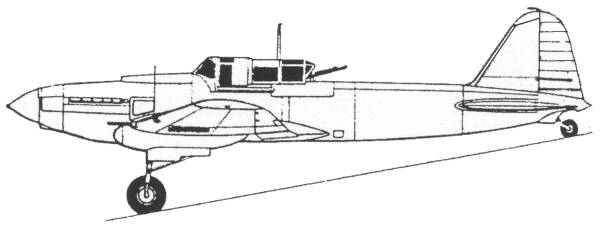
The idea for a Soviet armored ground-attack aircraft dates to the early 1930s when Dmitry Pavlovich Grigorovich designed TSh-1 and TSh-2 armored biplanes. However, Soviet engines at the time lacked the power needed to provide the heavy aircraft with good performance. The Il-2 was designed by Sergey Ilyushin and his team at the Central Design Bureau in 1938 with the initial design designation TsKB-55. The TsKB-55 was a two-seat aircraft with an armored shell weighing 700 kg (1,540 lb), protecting crew, engine, radiators, and the fuel tank. Standing empty, the Ilyushin weighed more than 4,500 kg (almost 10,000 lb), making the armored shell about 15% of the aircraft's gross weight. The prototype, which first flew on 30 December 1939, won the government competition against Sukhoi Su-6 and received VVS designation BSh-2. However, BSh-2 was eventually rejected in favor of a lighter single-seat design, the TsKB-57, which first flew 12 October 1940. The original Mikulin AM-35 1,370 hp (1,022 kW) engine proved too weak and was replaced by the 1,680 hp (1,254 kW) Mikulin AM-38 before the aircraft entered production. The aircraft entered production in 1941 as Il-2, and 249 had been built by the time Germany invaded the Soviet Union on 22 June 1941. The Il-2 aircraft played a crucial role on the Eastern Front, and in Soviet opinion it was the most decisive aircraft in the history of modern land warfare. The armored tub ranging from 5 to 12 mm (0.2 to 0.5 in) in thickness and enveloping the engine and the cockpit could deflect all small arms fire and glancing blows from larger-caliber ammunition. There are reports of the armored windscreen surviving direct hits from 20 mm rounds.
While Il-2 proved to be a deadly air-to-ground
weapon, heavy losses
resulted from vulnerability to fighter attack, consequently, in
February 1942, the two-seat design was revived. The IL-2M
with a rear gunner under the stretched canopy entered service in
September 1942 with surviving single-seaters were eventually modified
to this standard. Later changes included an upgrade from 20-mm to 23-mm
to 37-mm cannons, aerodynamic improvements, use of wooden outer wing
panels instead of metal and increased fuel capacity. In 1943, the IL-2
Type 3 or Il-2m3
came out with redesigned wings that were swept back 15 degrees on the
outer panels to counter the shift in the center of gravity brought on by
the addition of the gunners position. Performance and handling were
much improved and this
became the most common version of the Il-2.
Close to 40,000 Il-2's were
produced by the end of the war, becoming one of the most widely
produced military aircraft in history.
The Kit
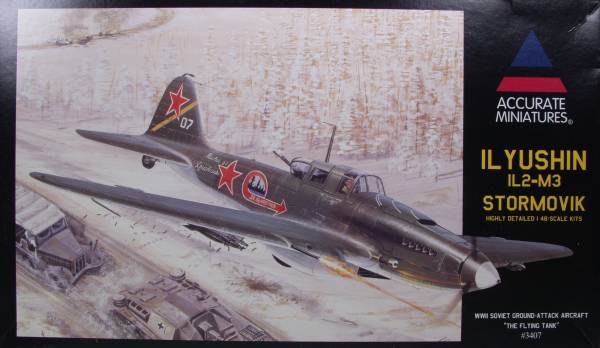
The Accurate Miniatures kit is probably the best kit ever offered of this interesting and historic aircraft. It comes in a typical Accurate Miniatures two part box with the instructions, decals and clear parts below a partition in the bottom of the box to prevent abrasion during shipping. The parts are presented on six sprues of light gray plastic and one sprue for the clear parts. The surfaces are smooth with both recessed and raised detail where applicable with the panel lines fine and and uniform. The sprue gates are small enough to not be a problem and I found no sink holes or other surface defects. There were a couple ejector pin marks inside the gear doors and in the cockpit that will show on the finished model if not addressed. The cockpit has a reasonable level of detail which should satisfy most modelers. Wheels are supplied both weighted and non-weighted amd have separate hubs to make painting easier. The kit comes with two bombs, four rockets and two under wing cannon that can be added is desired. By my count there are 110 parts in gray and photos of the sprues are shown below.
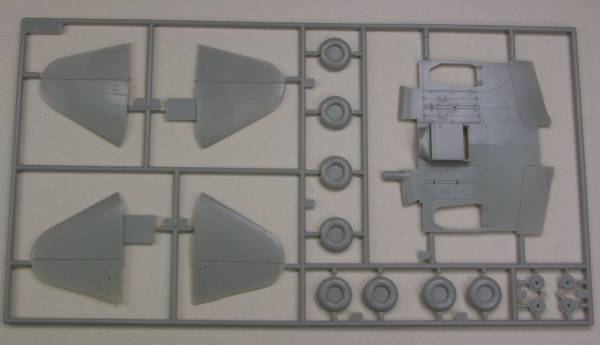
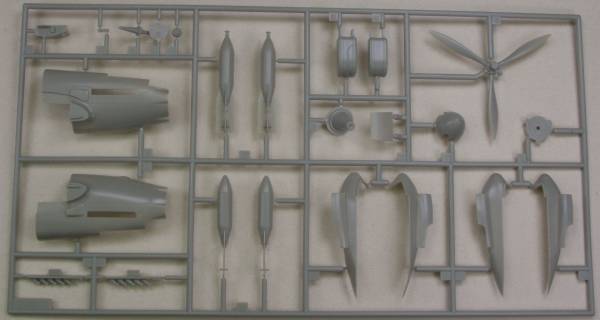
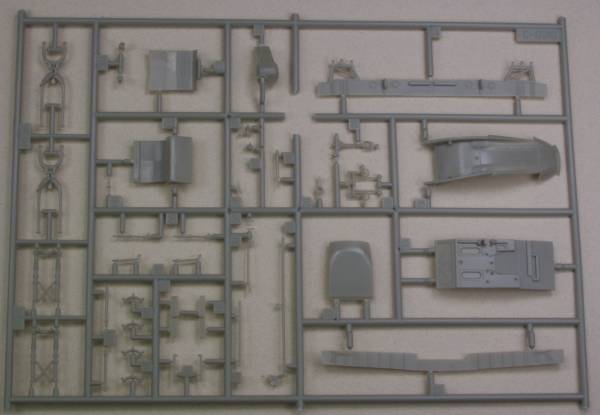
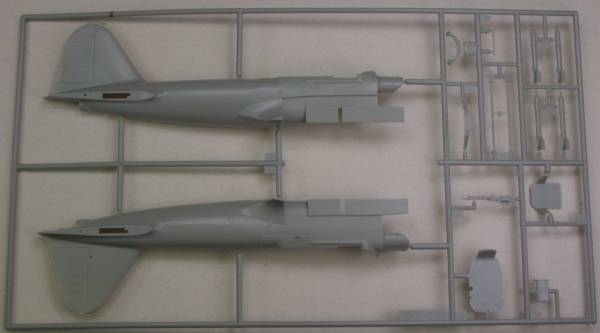
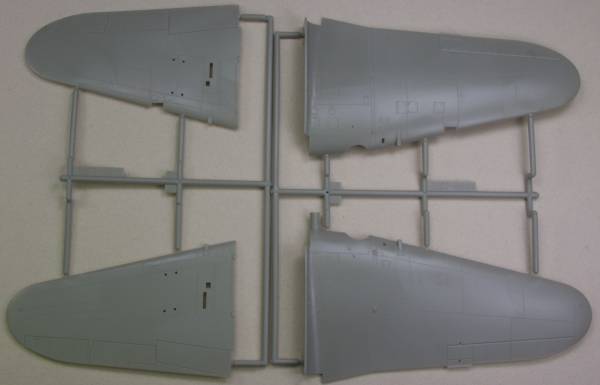

The clear parts are thin, clear and the framing is well defined. The clear parts include alternate parts for the gunners position and the pilots canopy can be positioned open or closed. Also in supplied in clear is the gunsight, landing light lens, the control panel and the armored plate behind the pilot which had windows at the top of it. A photo of the sprue is below.
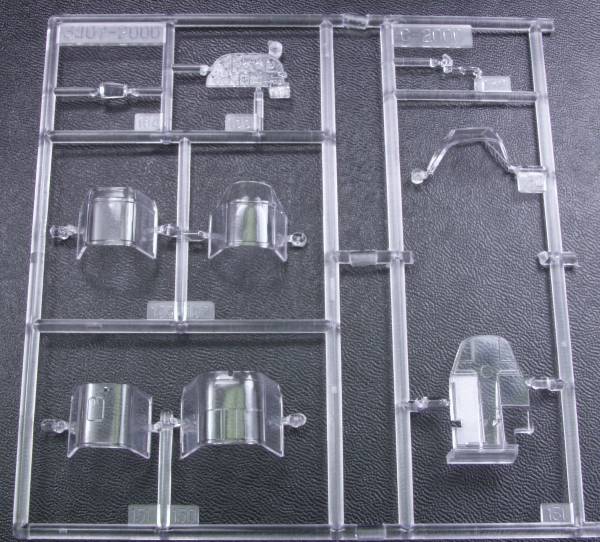
The decals appear thin, opaque and reasonably well registered however the white surrounds on the stars looked a little off. Decals are supplied for one aircraft. Also included on the sheet are the pilots harness and seat belts and the instruments for the control panel. See below.
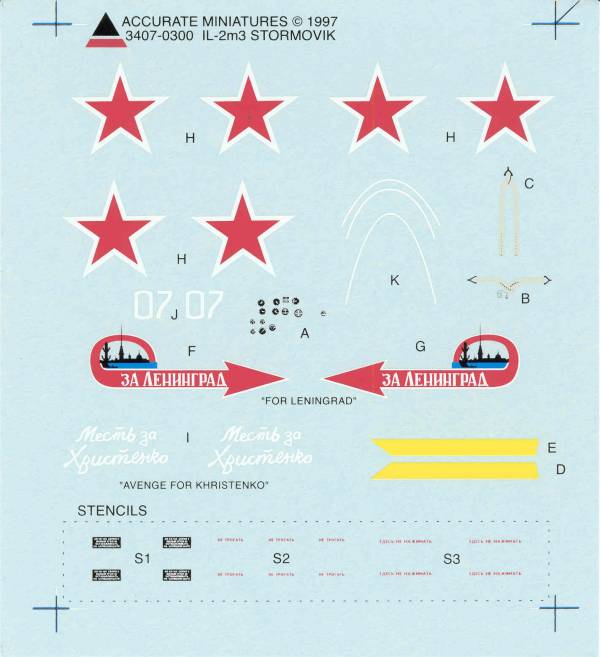
The instructions consist of three 11" x 13" pages folded and stapled to form a booklet of twelve pages. A paint chart with the colors to be used listed by federal standard number and Model Master, Humbrol, Gunze Sangyo Aqueous, Gunze Sangyo Mr. Color, Aeromaster and Floquil Classic Military numbers. The instructions are through and as with other Accurite Miniatures kits it pays to follow them. There are reports that the wing to fuselage assembly can be trying but all in all the kit goes together well.
After Market Goodies
The kit is pretty well detailed as it comes but I decided to go with an Eduard photoetch set [FE380] as it is one of their color sets and I hate painting instrument panels. See photo below.
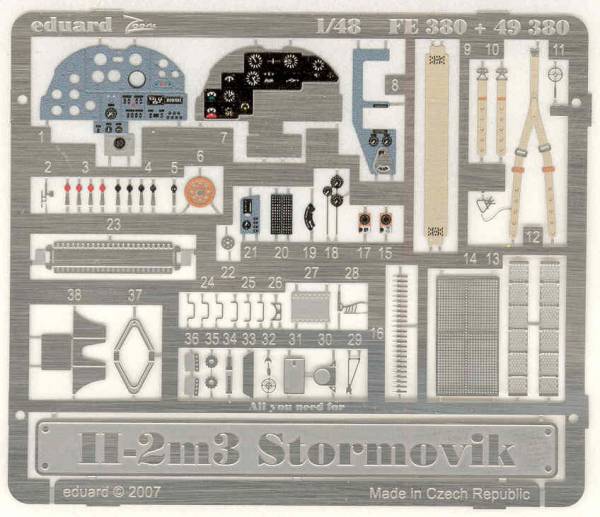
I also obtained a mask set from Black Magic [CEBM48255]
Conclusions
This is a nicely done kit than a reported fit issue in a couple places will build up into a nice representation of this historic aircraft. Anyone with a moderate amount of skill should have no major issues with it.
Links to kit build or reviews
An inbox review can be found here and review/build here and here
References
Back to the Russians are Coming
Updated 2/22/08